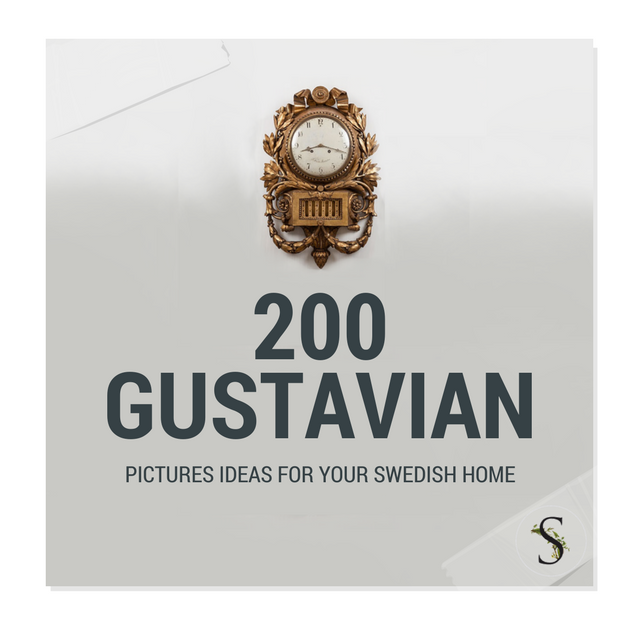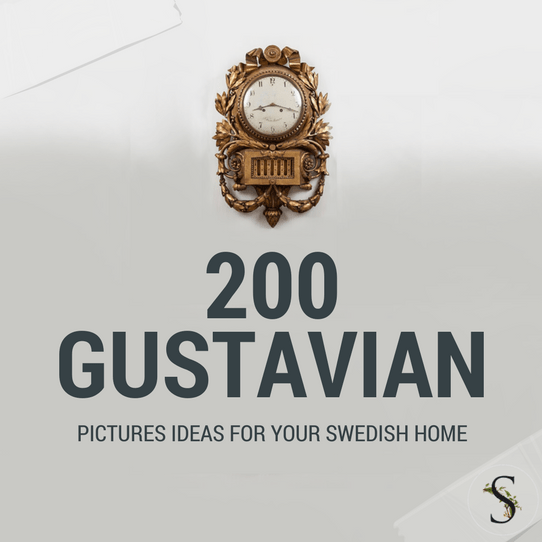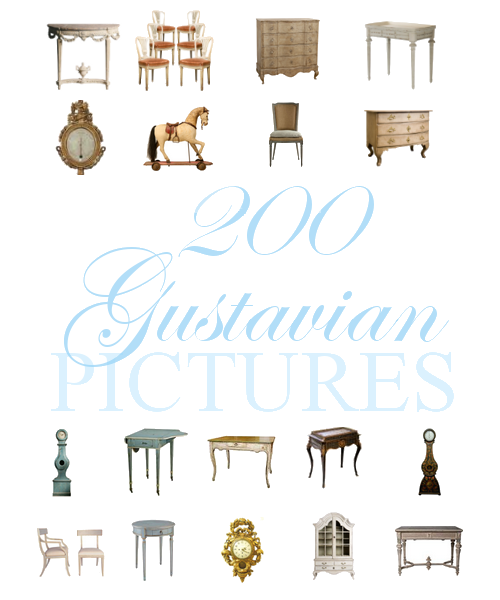
Elements of the 18th century Gustavian style still find their way into our decorating magazines some 200 years later, and have been said to be the most beautiful interior design period throughout time. Interiors were designed around light, colors were muted, pastels were at their height in art, and the furniture was drop dead gorgeous. White painted furniture is still the most popular trend in home decor. So where did this all start?
Gustavian style was named after King Gustav III, whose design style was inspired by the neoclassical designs he saw in France. Gustav traveled to France as a young man before he became king, and spent many years at the French court where he observed a lifestyle of richness beyond comprehension. At the time, Versailles was one of the largest palaces in the world. France was determined to make a statement of it’s wealth without saying a word. The best furniture, drapery, upholstery and architecture was bought and displayed, and Gustav found himself captivated by the grandeur associated with the court.
Gustav III came into power after the death of his father and ruled in Sweden from 1772 to 1792. While 20 years doesn’t seem like a significant period of time, this king left an artistic mark in Sweden that hasn’t ever been forgotten. While Sweden couldn’t compete with the vast wealth of France, they adopted many of the styles seen in France in their own way. Wood was plentiful in Sweden, and woodworkers were able to reproduce much of the fashionable furniture seen in France. Other decor elements such as marble were costly, so faux painting produced these same looks for less. Natural fabrics such as linen were used for upholstery instead of silk. Lighter woods were used instead of mahogany and painted.
Early Gustavian styles were clearly inspired by the French Rococo movement. The floral fabrics, and the bombe chests, and Louis XV rounded back chairs were marks of the Rococo styles found in Louis XV’s reign. The neoclassical design which moved in after were seen through Louis XVI’s reign. He adopted some of the same ornamental designs seen in furniture, yet changed the overall frame to ones that were square or rectangular. Later with the excavations at Pompeii, classical design further left it’s mark on this style. In Italy they had unearthed the ancient cities of Herculaneum and Pompeii, and a interest in art and design spread like wildfire through Europe. Gustaf III himself visited the ruins in 1783-84, near Naples. The late Gustavian style was heavily influenced by the English models clearly seen inspired from the chippendale chests and hepplewhite tables. A combination of all three of these design styles can be classified as Gustavian, and are seen all mixed together much like our modern homes today.
Gustavian interior designs in Sweden were practical, yet pretty even in the tightest of spaces. Swedes needed to bring in as much light as possible, as the winters seemed long and dark. Lighter paint colors were seen inside, with bleached out wood floors. Pullout sofas functioned as a place to sit in the day and as a sofa and a bed at night. Round demi lune tables were pushed against the wall through the day, and assembled together when needed. Beds were built in the wall, much like an over-sized closet with a curtain which could be pulled across for privacy.
Get the Swedish Look For Yourself- Here Is How:
– Furnish your home with straight legged furniture. Consider bleached wood, or white, or light gray painted furniture.
-Exchange out your silk fabrics for something more lived-in and natural. Linen, raw silk, simple checked cotton, or natural duck canvas are great choices for drapery and upholstery. The use of floral patterns were also quite popular in the Gustavian / Swedish style.
-Gustavian style is marked by gray painted furniture, pastel colors and lots of whites and creamed painted interiors. Consider painted furniture with clean simple lines and fabulous lighting.
– Remove the clutter, less is always more with the Gustavian styles. Showcase collections in a simplistic manner.

